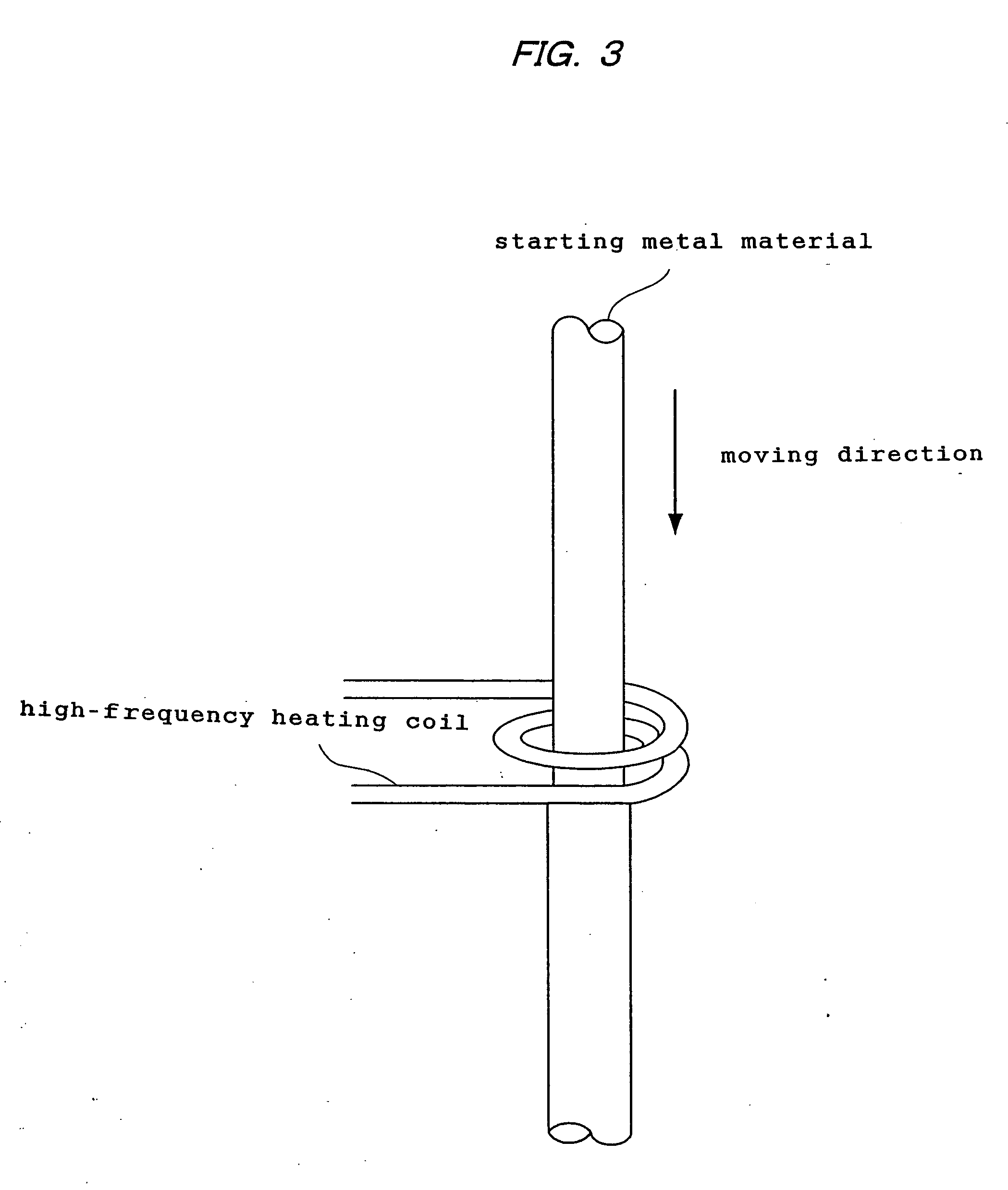Metal porous body manufacturing method
a metal body and manufacturing method technology, applied in the field of metal porous body manufacturing, can solve the problems of significant formation of coarse pores, reduced cooling rate in the inner part of metal bodies, and difficult to form uniform pores
- Summary
- Abstract
- Description
- Claims
- Application Information
AI Technical Summary
Benefits of technology
Problems solved by technology
Method used
Image
Examples
example 1
[0086] Various types of porous metal bodies varying in porosity were produced using iron of 99.99% purity as a starting metal material and employing the apparatus shown in FIG. 8. As the starting metal material, a cylindrical material 10 mm in diameter and 1,000 mm long was used.
[0087] Nitrogen or hydrogen was supplied into the apparatus as the dissolving gas, and argon was further supplied so as to control the porosity, where necessary.
[0088] The moving rate of the starting metal material was set at 160 μm / second. A high-frequency heating coil was used as the heating means, and the temperature of the melting portion was maintained at 1,555° C.
[0089]FIG. 9 is a graph showing the relationship between the porosity and the tensile yield stress of the porous metal material obtained. FIG. 10 is a graph showing the relationship between the porosity and the tensile strength. The graph in FIG. 9 shows measurement results on tensile yield stresses in a direction parallel to a growth direc...
PUM
| Property | Measurement | Unit |
|---|---|---|
| pressure | aaaaa | aaaaa |
| pressure | aaaaa | aaaaa |
| melting point | aaaaa | aaaaa |
Abstract
Description
Claims
Application Information
 Login to View More
Login to View More - R&D
- Intellectual Property
- Life Sciences
- Materials
- Tech Scout
- Unparalleled Data Quality
- Higher Quality Content
- 60% Fewer Hallucinations
Browse by: Latest US Patents, China's latest patents, Technical Efficacy Thesaurus, Application Domain, Technology Topic, Popular Technical Reports.
© 2025 PatSnap. All rights reserved.Legal|Privacy policy|Modern Slavery Act Transparency Statement|Sitemap|About US| Contact US: help@patsnap.com



